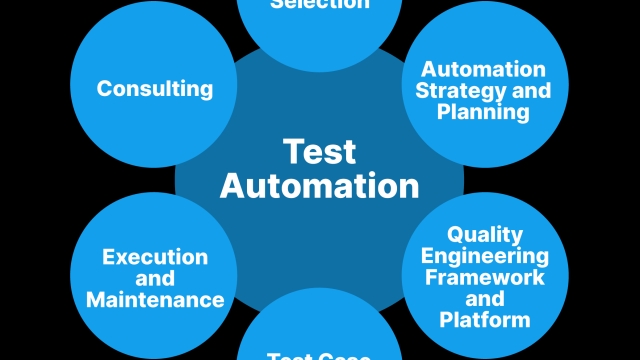
Streamlining Testing: A Deep Dive into Rapid Test Automation Tools

In today’s fast-paced software development landscape, the demand for streamlining testing processes has never been more critical. Rapid Test Automation has emerged as a game-changer, offering efficient solutions to accelerate the testing phase while maintaining quality standards. With the proliferation of diverse Test Automation Tools in the market, teams have a plethora of options to choose from to enhance their testing workflows and achieve faster time-to-market. The synergy between Rapid Test Automation and cutting-edge tools is reshaping how organizations approach testing, making it more efficient, reliable, and cost-effective.
Benefits of Rapid Test Automation
One of the key advantages of rapid test automation is the significant reduction in manual effort required. Tasks that would traditionally take hours, or even days to complete manually, can be automated within a fraction of the time with the right tools in place. This efficiency not only saves time but also allows testing teams to focus on more strategic and high-value activities.
Another benefit of rapid test automation is the improvement in test coverage. With automation tools, test cases can be executed more frequently and consistently across different environments and configurations. This helps in identifying bugs and issues early in the development cycle, leading to higher-quality software being delivered to end-users.
Additionally, rapid test automation contributes to overall cost savings for organizations. By automating repetitive tasks, companies can reduce the need for manual testers and reallocate resources to other critical areas. This results in faster time-to-market and ultimately a competitive edge in the market.
Popular Test Automation Tools
First up is Selenium, a widely used open-source test automation tool primarily for web applications. With its versatile support for various programming languages and browsers, Selenium is a top choice for testers looking to automate their web testing processes effectively.
Next, we have Appium, a popular test automation tool specifically designed for mobile applications. Appium’s compatibility with both iOS and Android platforms, along with its robust API support, makes it a go-to option for mobile app testers seeking streamlined automation solutions.
Codeless Automation Testing Tools
Lastly, TestComplete is a comprehensive test automation tool known for its user-friendly interface and powerful scripting capabilities. TestComplete’s extensive feature set, including built-in object recognition and test recording functionalities, simplifies the automation process for testers across different domains.
Best Practices for Test Automation
Use a Modular Approach: When implementing test automation, it is crucial to design test scenarios in a modular manner. Breaking down test cases into smaller, reusable modules allows for easier maintenance and scalability of automation scripts. By organizing tests in a modular fashion, teams can efficiently update, reuse, and troubleshoot automated test cases across different parts of the application.
Implement Version Control: Version control systems such as Git play a vital role in managing test automation code. By utilizing version control, teams can track changes, collaborate effectively, and maintain a history of code modifications. This practice ensures that different team members can work concurrently on test scripts, track changes, and revert to previous versions if needed, promoting better collaboration and code management.
Prioritize Continuous Integration: Integrating automated tests into a continuous integration and continuous deployment (CI/CD) pipeline streamlines the testing process and assists in identifying issues early on in the development cycle. By automating the execution of tests within the CI/CD environment, teams can quickly detect defects, assess code quality, and receive immediate feedback on the impact of new code changes. This approach helps in achieving faster delivery of high-quality software through automated testing at various stages of the development lifecycle.



